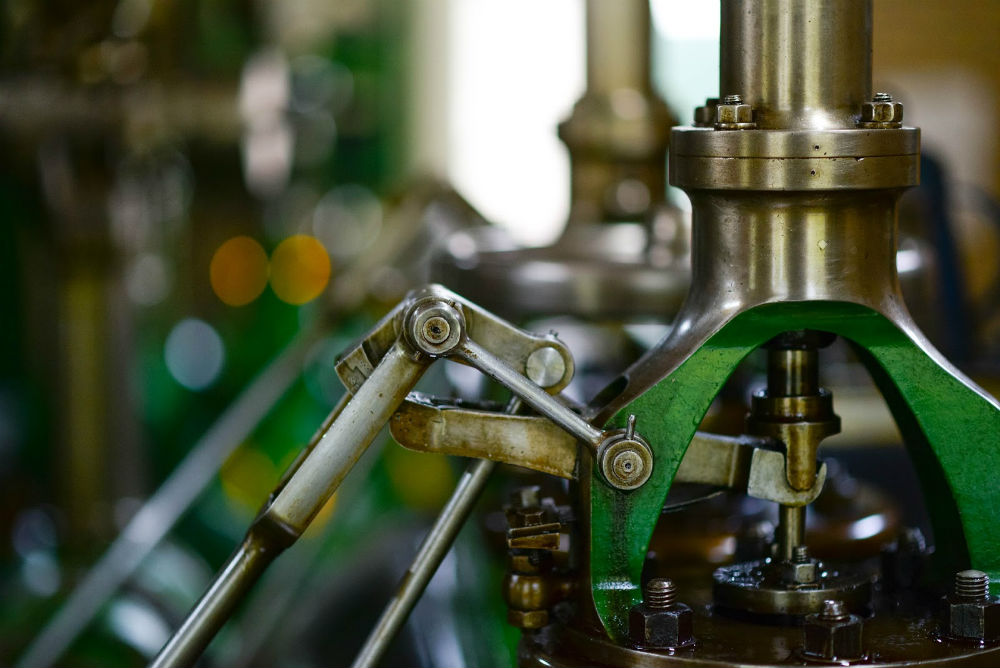The industrial internet of things (IoT) is starting to slowly emerge and take over places like factories.
Technology is improving how things work, making the processes smoother or less convoluted. Even in the world of manufacturing, networking and communications technologies are starting to make factories smarter, more efficient, and more interlinked to the internet.
Companies are starting to see the benefits of connecting their facilities together. These connections and the benefit of connectivity make these facilities more profitable, so many see the advantages as outweighing the costs of establishing internal networks.
We are bearing witness to the rise of the smart factory. With that in mind, what is a smart factory?
Definition

A smart factory is highly-digitized, with the systems being interconnected to perform extended functions that go beyond simple automation.
Network connections are integral since it allows the factory to use environmental data as the basis for flexible, autonomous responses to changes in the process. They’re aware of the context of what they’re doing and can adapt accordingly.
Common Elements
Smart factories tend to vary in the minute details, employing all sorts of components and processes. However, they all share certain commonalities. These are what set them apart from conventional facilities.
How does a smart factory do this? Well, it needs infrastructure and support. You’ll need to get network companies and a patch cable supplier to help you get the right hardware.
Once you have that, you can put together the virtual and physical background systems that take in all that data. There are various sorts of information that ends up circulating in the systems, including simulation models or tool condition analysis.
Cyber-Physical Systems
One thing you might find is cyber-physical systems. These are robots and process control systems, the components that allow for the integration of physical components, computing systems, and network processes.
These are all bound together into a single, consolidated system that allows for creating virtual copies of the “flesh and blood” elements and the environments they operate in.
IoT Systems
IoT systems are also present and are similar to CPS. However, they focus on something else. IoT systems are focused on connecting devices like sensors and automated controls, tying them together into a system that allows for extending their existing functions.
For most smart factories, an IoT system will bind together the physical CPS components, linking them into a singular network.
Industry 4.0
The combination of the two gives smart factories characteristics that flow along with certain principles. These are part of the basis of the concept of Industry 4.0, the emerging digitization and technological development of the industrial world.
Interoperability
Interoperability is the first principle. It is one of the essential characteristics of the smart factory, enabling machines to communicate with each other.
Linked to each other over a network, it allows for one machine to know what the other is doing and for displaying that data to the people controlling the whole thing.
Virtualization
As the CPS can monitor physical processes, the smart factory can put together a virtual copy of the environment and allow for virtualization.
This allows the systems to integrate inputs from both the manual controls and over the network. This allows for context-specific processing of past and present information, creating a more transparent process for operators to examine.
Decentralization
Smart factories are decentralized, so taking out one computing unit isn’t enough to shut it all down. Each CPS functions independently of the others. This creates a great deal of flexibility and resiliency, making it easier to optimize to solve a problem, anticipated or otherwise.
Real-Time Capability
All this interconnection, along with the use of modern networking technology, allows for real-time capability.
The smart factory can react to issues that arise as they happen, processing the data as it comes in. This allows the systems to notice anything out of place, predict anomalies, and prevent anything worse from happening.
Greater Interconnection
The smart factory has an impact on the production chain that does its best work if allowed to extend beyond just the factory.
By connecting it to management systems and other areas of the enterprise, more data is gathered and more input processed. The result is a much more comprehensive picture of the business, and the ability to make high-level calls to tackle the edge cases that need executive decisions but happen “on the ground.”
Advantages
A smart factory provides clear advantages that arise from the connectivity and flexibility. One of these is that there is a lot more data, and it’s coming in real-time.
The digital “twin” systems allow for testing procedures that help improve product quality before they hit the market. Studies show production costs go down after the systems are implemented. Finally, the data can be used to help predict issues.
Conclusion
The smart factory is the future, though it may take a while to get where it’s going. The various advantages are invaluable, because of how much it can help a manufacturing business. Yes, it can be costly to add all these features to an existing factory, but the intangible benefits can outweigh the very real financial cost.

